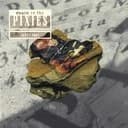The E Aeolian scale follows the natural minor formula of whole steps (W) and half steps (H): W-H-W-W-H-W-W, or 2-1-2-2-1-2-2 semitones. The notes are E, F#, G, A, B, C, and D. Starting from E, the scale progresses: E to F# (whole step), F# to G (half step), G to A (whole step), A to B (whole step), B to C (half step), C to D (whole step), and D to E (whole step). This interval pattern creates the characteristic dark, introspective sound that defines the Aeolian mode and makes it one of the most emotionally powerful scales in Western music.
E Aeolian as the Sixth Mode of G Major
Understanding E Aeolian's modal relationship is essential for advanced piano theory. As the sixth mode of G Major, E Aeolian shares the exact same notes (E, F#, G, A, B, C, D) but establishes E as the tonal center instead of G. This makes them relative keys, a concept fundamental to understanding key modulation and chord progressions. The relative major-minor connection enables smooth transitions between bright and melancholic tonalities, a technique extensively used in rock, pop, and classical composition.
Parallel Relationship with E Major
While E Aeolian is the relative minor of G Major, it also has a parallel relationship with E Major. Both scales share the same tonic note (E), but E Major contains four sharps (F#, G#, C#, D#) while E Aeolian has only one sharp (F#). Comparing these parallel keys reveals how the third, sixth, and seventh scale degrees are lowered in the minor scale, creating the intervals that give Aeolian its distinctive character. This comparison helps pianists understand how major and minor tonalities differ structurally.
Common Chords in E Aeolian
E Aeolian generates seven diatonic chords that form the harmonic foundation for countless songs. The primary chords are: i (E minor), ii° (F# diminished), III (G major), iv (A minor), v (B minor), VI (C major), and VII (D major). The i-iv-v progression (Em-Am-Bm) is especially common in rock and folk music, while the i-VI-III-VII progression (Em-C-G-D) appears in numerous pop and rock anthems. Understanding these chord relationships enhances both improvisation and composition skills.
Why E Aeolian Dominates Rock and Blues
E Aeolian holds legendary status in rock and blues music. Its popularity stems from guitar-friendly open string resonance and the powerful, brooding character that E minor provides. Countless iconic riffs and solos are built on E Aeolian, from classic rock to modern alternative. On piano, E Aeolian offers an excellent progression for students who've mastered A Natural Minor, introducing one sharp while maintaining approachable fingering patterns (right hand: 1-2-3-1-2-3-4-5; left hand: 5-4-3-2-1-3-2-1).
Expanding Beyond Natural Minor
Once you've mastered E Aeolian, explore its harmonic variations to expand your expressive palette. The E Harmonic Minor scale raises the seventh degree from D to D#, creating a distinctive augmented second interval and enabling stronger dominant-to-tonic resolutions. The E Melodic Minor scale raises both the sixth and seventh degrees (C to C# and D to D#) ascending, providing smoother melodic lines while maintaining the minor character. These variations are essential for jazz improvisation, classical composition, and advanced rock playing.
Practice E Aeolian daily with a metronome, starting slowly and gradually increasing tempo while maintaining even tone and proper fingering. Focus on hearing the emotional character of each scale degree and how they relate to the tonic E. After thoroughly mastering E Aeolian, progress to B Natural Minor (two sharps) to continue developing your minor key fluency through the circle of fifths.





